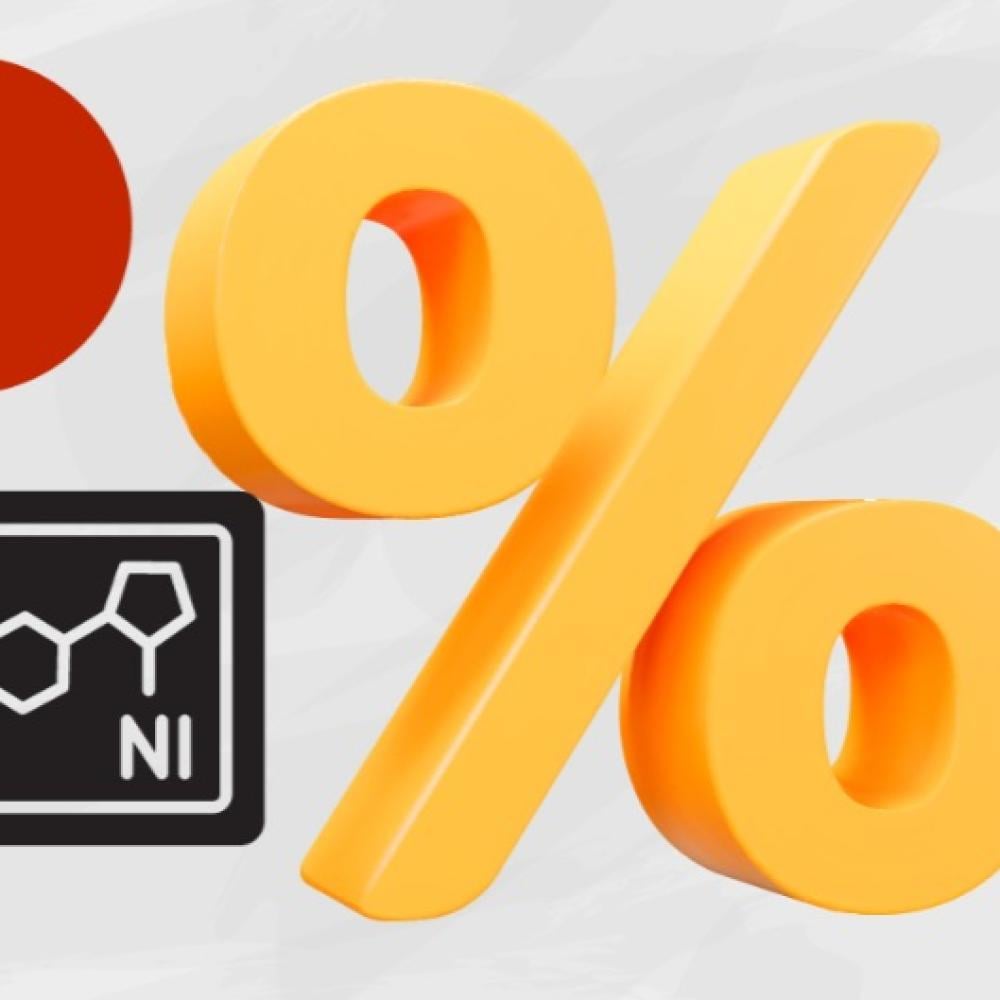

**Welcome to Your Ultimate Resource for E-Cigarette Nicotine **
At [Your Website Name], we are dedicated to providing comprehensive information on the nicotine content in electronic cigarettes. With the rising popularity of vaping, understanding nicotine levels has never been more crucial.
**Understanding Nicotine Levels: What’s Really in Your E-Cigarette?**
Dive into the basics of nicotine concentration in e-cigarettes and learn how it compares to traditional smoking methods.
**The Hidden Risks: Examining Nicotine Concentration in Vaping Products**
Uncover the potential risks associated with varying nicotine levels in different vaping products and what that means for your health.
**E-Cigarette Nicotine Content: A Comprehensive Guide for Users**
Our guide offers insights into various e-liquid labels to help you make informed choices about your vaping experience.
**How Much Nicotine is in Your Vape? Decoding E-Liquid Labels**
Learn how to read e-liquid labels effectively and understand the nicotine content you are consuming with each puff.
**The Vaping Dilemma: High Nicotine vs. Low Nicotine E-Cigarettes**
Explore the pros and cons of choosing high nicotine versus low nicotine options in your vaping journey.
**Exploring the Impact of Nicotine in E-Cigarettes on Health and Addiction**
Gain insights into how nicotine affects your body and its potential for addiction, particularly in comparison to traditional cigarettes.
**Nicotine Addiction: Is Vaping a Safer Alternative to Traditional Cigarettes?**
Weigh the evidence on whether vaping provides a safer alternative to conventional cigarettes and what that means for smokers.
**The Science Behind Nicotine Delivery in Electronic Cigarettes**
Discover the technology behind nicotine delivery systems in e-cigarettes and how it influences your vaping experience.
**Are You Getting Too Much Nicotine from Your E-Cigarette? Signs to Watch For**
Learn to recognize the warning signs of excessive nicotine intake to ensure a safer vaping experience.
**Regulating E-Cigarette Nicotine: Current Laws and Future Implications**
Stay updated on the latest regulations surrounding nicotine content in e-cigarettes and what they mean for consumers like you.
Join us on our journey to empower vapers with the knowledge they need to make safe and informed choices about nicotine consumption. Explore our articles and be part of a healthier vaping community today!

The Hidden Risks: Examining Nicotine Concentration in Vaping Products
As vaping continues to rise in popularity, understanding the implications of high nicotine levels is critical. While e-cigarettes are often marketed as a safer alternative to traditional cigarettes, the nicotine concentration in vaping products can present significant risks.
Understanding the Risks of High Nicotine Levels
High nicotine levels can have profound effects on both the body and mind. For example, a user might think they are making a healthier choice by opting for a vape with a higher nicotine content, yet this can lead to dependency much like traditional smoking. Personal experiences shared by users illustrate this concern; one former smoker noted, “I thought vaping would help me cut down, but I ended up using more nicotine than I ever did with cigarettes.”
- Increased dependency: Higher nicotine levels can escalate cravings, leading users to vape more frequently.
- Withdrawal symptoms: Reducing nicotine intake can trigger symptoms like irritability, anxiety, and difficulty concentrating.
Implications on Short-Term and Long-Term Health
In the short term, users may experience side effects such as dizziness, nausea, and increased heart rate. Long-term, the consequences can be more severe, including potential cardiovascular issues and various respiratory complications.
- Immediate effects:
- Dizziness
- Increased heart rate
- Shortness of breath
- Long-term concerns:
- Heart disease
- Lung damage
- Chronic dependence leading to sustained nicotine use
Being aware of the concentration in vaping products is essential for making informed choices about personal health and well-being.
E-Cigarette Nicotine Content: A Comprehensive Guide for Users
Now that we've uncovered the hidden risks associated with high nicotine levels, it’s essential to explore the different nicotine content available in e-cigarettes. Understanding these variations can empower users to make informed choices that suit their needs.
Explaining Different Varieties of E-Cigarette Nicotine Content
E-cigarettes come in a range of nicotine concentrations, typically measured in milligrams per milliliter (mg/ml). Here’s a breakdown of common e-liquid strengths:
- Low nicotine (0-3 mg/ml): Ideal for casual users or those transitioning from traditional cigarettes.
- Moderate nicotine (6-12 mg/ml): Suitable for those who may have previously smoked and are looking for a balance.
- High nicotine (18-24 mg/ml): Often preferred by heavy smokers seeking a more potent experience.
For instance, a friend of mine swore by a 12 mg/ml e-liquid, claiming it was necessary to satisfy her cravings without overwhelming her system.
Choosing the Right Product Based on Preferences and Lifestyle
Selecting the right e-cigarette isn’t just about nicotine concentration; it also involves considering personal preferences and lifestyle. Here are a few factors to keep in mind:
- Vaping frequency: Daily vapers might prefer a lower nicotine level to avoid dependency, while occasional users might opt for higher concentrations.
- Device type: Some devices are designed for high nicotine efficiency, influencing product choice.
- Flavor preferences: Nicotine content can also impact flavor perception; some users prefer lower nicotine for a more pronounced taste experience.
Ultimately, the right choice will depend on individual circumstances and comfort levels. Listening to your body and adjusting as needed can lead to a more enjoyable and healthier vaping experience.
How Much Nicotine is in Your Vape? Decoding E-Liquid Labels
Moving forward, it’s crucial to understand how to interpret e-liquid labels—this knowledge ensures that users can effectively manage their nicotine intake based on personal needs.
Decoding Common Nicotine-Related Terminologies
E-liquid labels can often be confusing, filled with jargon that might leave users scratching their heads. Here are some common terms to help clarify things:
- Nicotine Strength: This is generally displayed in mg/ml, indicating how much nicotine is present in each milliliter of e-liquid. For example, 6 mg/ml means there are 6 milligrams of nicotine in every milliliter.
- Nicotine Salt: A type of nicotine that is absorbed more efficiently by the body, allowing users to enjoy higher concentrations without the harsh throat hit.
- VG/PG Ratio: This refers to the vegetable glycerin (VG) and propylene glycol (PG) content in e-liquids. A higher VG percentage often means thicker vapor and smoother hits, while more PG can enhance flavor intensity.
A personal experience often shared by vapers reveals that deciphering these terms can be overwhelming at first, but with time, it becomes second nature.
Understanding Nicotine Consumption Per Vape
How much nicotine a user consumes can vary significantly based on their vaping habits. Factors such as the device type, puff duration, and frequency of use play a role in nicotine delivery. On average, a single puff of a 12 mg/ml liquid can deliver roughly 0.1 mg of nicotine. For those trying to gauge how many puffs equate to a traditional cigarette, it typically takes about 10-15 puffs on a vape to reach a similar nicotine intake.Being aware of these factors allows users to adjust their vaping habits effectively and responsibly, ensuring a more tailored vaping experience. Monitoring consumption helps in managing both cravings and health impacts.
The Vaping Dilemma: High Nicotine vs. Low Nicotine E-Cigarettes
As vapers navigate their preferences, the choice between high and low nicotine e-cigarettes often presents a dilemma. Each option comes with its own set of advantages and drawbacks, making it essential to evaluate both sides carefully.
Pros and Cons of High Nicotine E-Cigarettes
High nicotine e-cigarettes can be appealing for those seeking a quick and intense hit. Here are some of their benefits and downsides:Pros:
- Instant satisfaction: Ideal for those transitioning from traditional cigarettes, high nicotine levels can curb cravings quickly.
- Fewer puffs needed: Users may find they need fewer puffs to achieve their desired nicotine intake, which can be convenient.
Cons:
- Dependency risks: Higher levels of nicotine can lead to increased dependence and withdrawal symptoms, making it harder to reduce consumption over time.
- Harsh throat hit: For some, the intensity may be overwhelming, causing discomfort while vaping.
Pros and Cons of Low Nicotine E-Cigarettes
On the other hand, low nicotine e-cigarettes present their own unique advantages. Here’s what to consider:Pros:
- Smoother experience: Lower nicotine levels can create a more enjoyable vaping experience, particularly for those who appreciate flavor.
- Reduced risk of dependency: With minimal nicotine intake, it may be easier to decrease use over time without severe withdrawal symptoms.
Cons:
- More frequent usage: Users might need to vape more often to achieve the same level of satisfaction, potentially increasing overall inhalation of other substances present in the vape.
Ultimately, the decision between high and low nicotine e-cigarettes depends on individual goals, lifestyle choices, and health considerations. Experimenting with different types can help users find the best fit for their needs and preferences.
Exploring the Impact of Nicotine in E-Cigarettes on Health and Addiction
As we delve deeper into the vaping experience, it’s essential to examine how nicotine, a primary ingredient in e-cigarettes, affects both our health and the nature of addiction. Awareness of these factors can significantly inform user choices.
Effects of Nicotine on the Body and Mind
Nicotine can exert both short-term and long-term effects, significantly influencing the body and cognitive function. Here’s a look at some notable impacts:
- Short-term effects: After consumption, nicotine can trigger a release of neurotransmitters in the brain. This may lead to heightened alertness, improved mood, and even temporary stress relief. For instance, a friend once remarked how a quick vape could turn around a tough day at work in an instant.
- Long-term risks: Prolonged use can escalate issues such as increased heart rate, elevated blood pressure, and even a greater likelihood of developing anxiety or depressive disorders. Long-term users may also experience respiratory problems and a heightened risk of cardiovascular diseases.
Role of Nicotine in Addiction
Nicotine's highly addictive nature cannot be overstated. It stimulates the brain’s reward system, leading to a cycle of dependency.
- Dopamine release: When nicotine is inhaled, it causes the brain to release dopamine, a neurotransmitter associated with pleasure. This reaction can induce feelings of euphoria, reinforcing the desire to use more.
- Tolerance and withdrawal: Over time, users may require higher doses to achieve the same effects, leading to increased consumption. When quitting or reducing intake, withdrawal symptoms such as irritability, cravings, and mood swings can emerge.
Understanding nicotine's effects on both health and addiction can empower users to make informed decisions while navigating the world of vaping. The goal is not only to enjoy vaping but to do so in a way that is mindful of personal health and wellbeing.
Nicotine Addiction: Is Vaping a Safer Alternative to Traditional Cigarettes?
As we continue to explore the relationship between nicotine addiction and vaping, an important question arises: Is vaping truly a safer alternative to traditional cigarettes? While many users switch to e-cigarettes with the hope of mitigating health risks, the reality is nuanced.
Comparing Vaping as an Alternative to Traditional Cigarettes
Vaping is often touted as a less harmful option compared to smoking. Here are some factors to consider in this comparison:
- Fewer toxic substances: Traditional cigarettes contain a cocktail of harmful chemicals. E-cigarettes generally produce fewer toxic compounds, which may lower the risk of certain health issues.
- Control over nicotine levels: Vaping allows individuals to choose their nicotine concentration, offering options ranging from high to low, or even nicotine-free. This variability can cater to different preferences and can aid those looking to manage their nicotine intake.
However, many smokers, including my neighbor who switched to vaping, find that while they might be inhaling fewer harmful substances, they still struggle with nicotine dependence, just in a different form.
Exploring Pathways to Nicotine Dependence Through Vaping
Despite the perceived benefits, vaping can still lead to significant nicotine dependence. The ease of access and variety of flavors can encourage frequent use, solidifying addictive patterns.
- Habitual usage: Users often find themselves reaching for their vape pen during various activities, creating a habit that mimics the ritual of smoking.
- Increasing tolerance: As with traditional smoking, regular use of high-nicotine e-liquids can lead to the need for higher concentrations to achieve the same satisfaction.
In conclusion, while vaping may be a less dangerous alternative to traditional cigarettes, it is not without risks. Users should remain mindful of their nicotine consumption and the potential for developing dependence.
The Science Behind Nicotine Delivery in Electronic Cigarettes
As we unravel the complexities of nicotine addiction and its implications, it’s vital to understand how nicotine is delivered through electronic cigarettes. This knowledge can provide deeper insights into vaping as a consumption method.
Mechanism of Nicotine Delivery in E-Cigarettes
The delivery mechanism in e-cigarettes is quite different from traditional smoking, utilizing a method called vaporization. Here's how it works:
- Heating element: When a user activates the device, a heating element warms up the e-liquid (which contains nicotine) to a temperature that converts it into vapor. This process allows the user to inhale fine aerosol particles rather than smoke.
- Aerosol inhalation: Each puff releases vapor, which is immediately absorbed into the lungs, allowing nicotine to enter the bloodstream swiftly. Users often feel the effects within minutes, similar to that of traditional cigarettes.
For example, when my cousin switched from smoking to vaping, he noted how quickly he felt the nicotine rush, often claiming it was more immediate than he experienced with cigarettes.
Factors Influencing Absorption and Effects on Users
Several factors can influence how effectively nicotine is absorbed in the body:
- Device type: Different e-cigarettes have varying designs and functionalities. High-capacity devices can deliver more vapor and nicotine in one puff.
- Nicotine concentration: Higher concentrations in e-liquids lead to more significant absorption per inhale, intensifying the user's experience.
- Inhalation technique: The way users inhale—short and quick versus slow and deep—can also impact nicotine uptake.
Understanding these mechanisms empowers users to make informed choices regarding their vaping habits, balancing satisfaction and health considerations effectively.
Are You Getting Too Much Nicotine from Your E-Cigarette? Signs to Watch For
As vaping becomes a more integrated part of daily life for many, it’s essential to monitor nicotine intake to avoid excessive consumption. Identifying the signs of too much nicotine can significantly impact overall health and vaping experience.
Signs and Symptoms of Excessive Nicotine Consumption
Recognizing the symptoms of overdosing on nicotine is the first step towards healthier vaping. Here are some common signs to watch for:
- Nausea: Feeling queasy or experiencing an upset stomach is often a telltale sign of too much nicotine.
- Dizziness: If you find yourself feeling lightheaded or dizzy shortly after puffing, it may indicate high nicotine levels.
- Increased heart rate: A racing heart or palpitations can signal that nicotine intake is too high.
- Irritability or anxiety: These mental health shifts can also be traced back to excess nicotine.
My friend once experienced these symptoms after switching to a stronger e-liquid, which prompted him to reevaluate his choice and consumption habits.
Adjusting Vaping Habits for Better Health
If you suspect excessive nicotine consumption, consider these adjustments:
- Reduce nicotine strength: Gradually transitioning to lower nicotine e-liquids can help manage cravings while minimizing intake.
- Limit vaping frequency: Setting time limits between puffs or establishing specific vaping times during the day may help control overall consumption.
- Mind your device settings: Some newer devices offer adjustable power settings; using a lower wattage can lead to less vapor and consequently, less nicotine intake per puff.
By monitoring symptoms and adjusting habits, vapers can enhance their experience while maintaining their health, ensuring that vaping remains a satisfying and enjoyable alternative.
Regulating E-Cigarette Nicotine: Current Laws and Future Implications
As the vaping industry continues to evolve, the regulation of e-cigarette nicotine has become a hot topic. With health implications at stake, understanding current laws and speculating on future changes is crucial for users and policymakers alike.
Examination of Current E-Cigarette Nicotine Regulation Laws
Most countries have begun to regulate nicotine in e-cigarettes to protect public health, particularly among youths. Here are some key aspects of current regulations:
- Age restrictions: In many regions, it's illegal for anyone under the age of 18 (or 21 in some areas) to purchase e-cigarettes, similar to traditional cigarette laws.
- Nicotine limits: Several jurisdictions have imposed caps on the maximum allowable nicotine concentration in e-liquids. For instance, the EU restricts e-liquids to 20 mg/ml.
- Advertising controls: Many places have strict regulations governing how e-cigarettes can be marketed, particularly concerning appealing to younger audiences.
My neighbor, who runs a local vape shop, often talks about the challenges of keeping up with these regulations, emphasizing the complexity of compliance in a rapidly changing landscape.
Speculations on Future Implications and Legislative Impact
Looking ahead, it's likely that e-cigarette regulations will tighten further as public awareness of health risks increases. Speculative trends may include:
- Minimizing flavor options: Lawmakers might restrict certain appealing flavors to deter youth from vaping.
- Higher taxes: Increased taxes on e-cigarettes could emerge, similar to tobacco products, aiming to reduce consumption overall.
- Stricter marketing guidelines: Continued scrutiny of advertisements may emerge, emphasizing health warnings and clearer information about addiction risks.
As regulations evolve, users should remain informed and adaptable. The balance between harm reduction and public health concerns will continue to shape the future of vaping.

The nicotine content in electronic cigarettes can vary widely depending on the e-liquid and device. Here’s a general breakdown:
Nicotine Levels in E-Liquids: E-liquids typically range from 0 mg (nicotine-free) to 50 mg/mL or more, with popular options at 3 mg, 6 mg, 12 mg, and higher strengths, such as 25-50 mg for salt nicotine products. Lower levels (e.g., 3-6 mg) are often used in larger, high-wattage devices, while higher levels are designed for low-power, pod-style vapes that use salt nicotine for a smoother throat hit.
- Nicotine Salts vs. Freebase Nicotine: Nicotine salts, popular in pod systems, allow for higher nicotine concentrations without a harsh throat hit. Freebase nicotine is often used in lower concentrations in sub-ohm devices, where more vapor is produced, making high nicotine unnecessary.
- Device Efficiency: The nicotine delivery depends not only on the e-liquid but also on the device’s efficiency. Higher-wattage devices may deliver nicotine more effectively, whereas smaller devices may require higher nicotine content in the liquid for the same effect.
Generally, it’s crucial to choose a nicotine strength suited to your previous nicotine usage and device to avoid overuse or insufficient intake.
OXVA is a leading brand in the field of manufacturing vape products.
Elf Bar is a leading e-cigarette brand, known for offering ready-to-use vape devices.
Geek Vape is one of the leading companies in the vape devices and related accessories industry.
DZRT Nicotine Pouches is one of the brands specialized in nicotine pouches.
Ripe Vapes is a well-known company in the manufacture of electronic cigarettes and e-liquids (flavors).
Roll Upz is a well-known brand in the e-liquid industry.
Grand Vape (or Grand) is one of the companies specialized in manufacturing vape devices and electronic liquids.
Browse by most popular vape brands
Gummy is a specialty brand.
SMOK is one of the most popular brands.
Sams Vape is a well known brand.
DR.VAPES Dr.Vapes is one of the well-known companies
JUCY JUCY Flavors are a range of flavors used in electronic vaping.
Browse by most popular vape brands
Products of the brand Mood Vape Company
Disposable disposable syringes
Electronic vape and hookah devices
Salt and vape flavors for molasses and electronic hookah
Accessories, coils, supplies and pods for electronic devices

